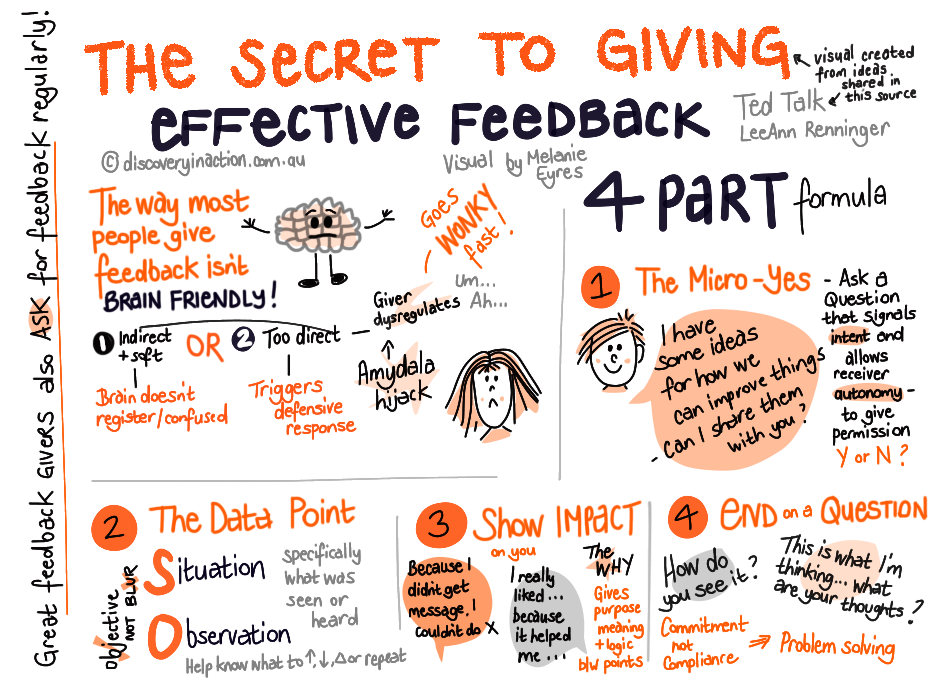The Secret to Giving Effective Feedback
We recently came across an excellent 4 minute video (TED talk) by cognitive psychologist LeeAnn Renninger about a scientifically proven method for giving effective feedback.
She says that people often experience feedback as either indirect and soft (leaving people confused) or too direct (triggering a defensive response). To optimise the effectiveness of feedback, both positive and negative, her research says that great feedback givers work through a four-part process – they:
- Ask a ‘micro-question‘ with a yes/no answer that gives some control to the responder e.g. Do you have a moment to talk about how that last meeting went? I have some observations about how the team is working – can I share them with you? In the likelihood that you will get a ‘yes’ response, you are getting permission to proceed.
- Provide the data point – clearly communicate the situation and the behavioural observation in specific not blurry or generalised terms. Specifically what was seen or heard. Again this can be both positive feedback or developmental feedback.
- Clearly state the impact of the behaviour or action that was described. This element is often forgotten in the feedback process, however it is critical as it provides the ‘why’ change/continue reasoning – the purpose, meaning and logic for the feedback.
- End the feedback with a question. How do you see it? What are your thoughts? This generates greater commitment, rather than compliance, to take action and moves the feedback giver and receiver into a place of joint problem solving.
The process describes above is very similar to a range of feedback models – the SOI (Situation, Observation, Impact) model; the SBI (Situation, Behaviour, Impact) model; and the TIPS (The situation, Impact, Plan, Support). An overview of these models is provided here.
However, the real challenge is to create a work environment where you don’t need to give feedback, because you’ve created a situation where people are continually asking for feedback. This puts the power in the hands of those asking for feedback and avoids risk of the fight or flight brain response. It also drives a continuous learning environment with consequent positive impacts on growth and performance.
Here’s a simple info-visual which you can keep nearby for when you next need to give feedback. It is our summary of the key points LeeAnn shares in the TED Talk which can be found here.
Credit source of ideas – LeeAnn Renninger. Click here to see the TED video.

